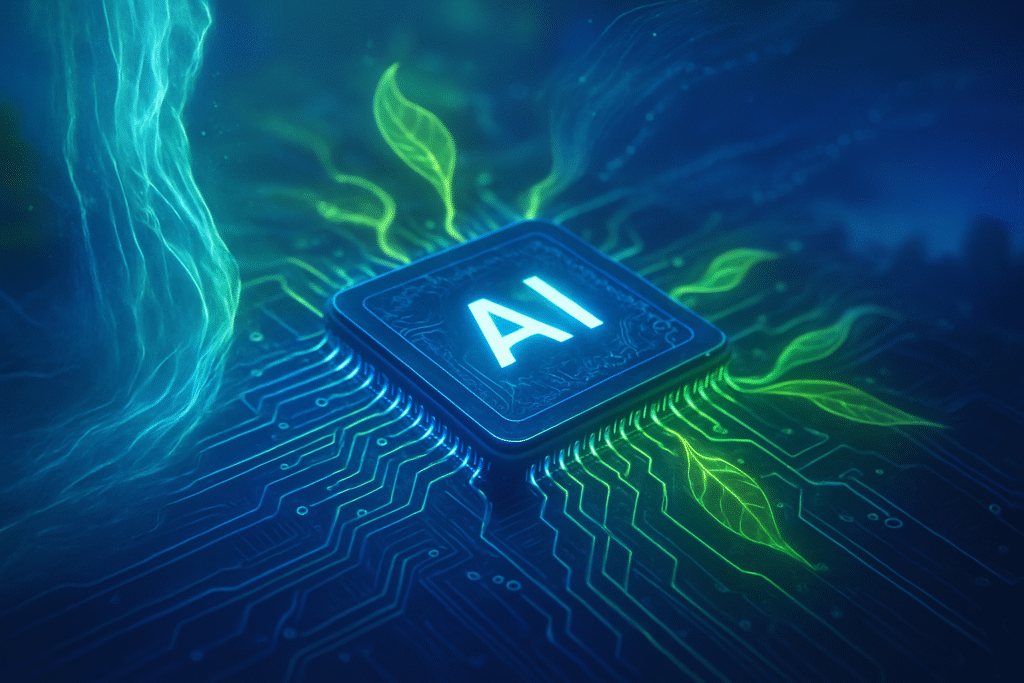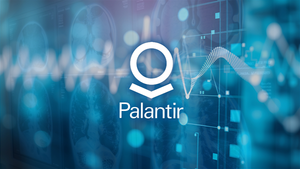
The relentless pursuit of artificial intelligence has ignited an unprecedented demand for computational power, placing immense pressure on the semiconductor industry. As AI models grow in complexity and data centers proliferate, the environmental footprint of chip manufacturing has become an urgent global concern. This escalating challenge is now driving a transformative shift towards sustainable practices in semiconductor production, redefining how AI chips are made and their ultimate impact on our planet. The industry is rapidly adopting eco-friendly innovations, recognizing that the future of AI is inextricably linked to environmental responsibility.
This paradigm shift, fueled by regulatory pressures, investor demands, and a collective commitment to net-zero goals, is pushing chipmakers to integrate sustainability across every stage of the semiconductor lifecycle. From revolutionary water recycling systems to the adoption of renewable energy and AI-optimized manufacturing, the industry is charting a course towards a greener silicon future. This evolution is not merely an ethical imperative but a strategic advantage, promising not only a healthier planet but also more efficient, resilient, and economically viable AI technologies.
Engineering a Greener Silicon: Technical Breakthroughs in Eco-Friendly Chip Production
The semiconductor manufacturing process, historically characterized by its intensive use of energy, water, and chemicals, is undergoing a profound transformation. Modern fabrication plants, or "fabs," are now designed with a strong emphasis on sustainability, a significant departure from older methods that often prioritized output over ecological impact. One critical area of advancement is energy efficiency and renewable energy integration. Fabs, which can consume as much electricity as a small city, are increasingly powered by renewable sources like solar and wind. Companies like TSMC (NYSE: TSM) have signed massive renewable energy power purchase agreements, while GlobalFoundries aims for 100% carbon-neutral power by 2050. Energy-efficient equipment, such as megasonic cleaning, which uses high-frequency sound waves, and idle-time controllers, are reducing power consumption by up to 30%. Furthermore, advanced materials like silicon carbide (SiC) and gallium nitride (GaN) are enabling more energy-efficient power electronics, reducing energy consumption in crucial AI applications.
Water conservation and management has also seen revolutionary changes. The industry, notoriously water-intensive, is now widely adopting closed-loop water systems that recycle and purify process water, drastically cutting consumption. Technologies like reverse osmosis and advanced membrane separation allow for high recycling rates; GlobalFoundries, for instance, achieved a 98% recycling rate for process water in 2024. This contrasts sharply with older methods that relied heavily on fresh water intake and subsequent wastewater discharge. Beyond recycling, efforts are focused on optimizing ultrapure water (UPW) production and exploring water-free cooling systems to minimize overall water reliance.
Waste reduction and circular economy principles are transforming material usage. Chemical recycling processes are being developed to recover and reuse valuable materials, reducing the need for new raw materials and lowering disposal costs. Initiatives like silicon recycling are crucial, and companies are exploring "upcycling" damaged components. The industry is moving away from a linear "take-make-dispose" model towards one that emphasizes maximizing resource efficiency and minimizing waste across the entire product lifecycle. This includes adopting minimalistic, eco-friendly packaging solutions.
Finally, green chemistry and hazardous material reduction are central to modern chipmaking. Historically, the industry used large amounts of hazardous solvents, acids, and gases. Now, companies are applying green chemistry principles to design processes that reduce or eliminate dangerous substances, exploring eco-friendly material alternatives, and implementing advanced abatement systems to capture and neutralize harmful emissions like perfluorocarbons (PFCs) and acid gases. These systems, including dry bed abatement and wet-burn-wet technology, prevent the release of potent greenhouse gases, marking a significant step forward from past practices with less stringent emission controls.
AI Companies at the Forefront: Navigating the Sustainable Semiconductor Landscape
The shift towards sustainable semiconductor manufacturing is profoundly reshaping the competitive dynamics for AI companies, tech giants, and startups. Companies that embrace and drive these eco-friendly practices stand to gain significant advantages, while those slow to adapt may face increasing regulatory and market pressures. Major tech giants are leading the charge, often by integrating AI into their own design and production processes to optimize for sustainability.
Intel (NASDAQ: INTC), for instance, has long focused on water conservation and waste reduction, aiming for net-zero goals. The company is pioneering neuromorphic computing with its Loihi chips for energy-efficient AI and leveraging AI to optimize chip design and manufacturing. Similarly, NVIDIA (NASDAQ: NVDA), a dominant force in AI GPUs, is not only building next-generation "gigawatt AI factories" but also using its AI platforms like NVIDIA Jetson to automate factory processes and optimize microchip design for improved performance and computing capabilities. Their anticipated adoption of chiplet architectures for future GPUs in 2026 underscores a commitment to superior performance per watt.
TSMC (NYSE: TSM), the world's largest contract chip manufacturer, is critical for many AI innovators. They have unveiled strategies to use AI to design more energy-efficient chips, claiming up to a tenfold efficiency improvement. TSMC's comprehensive energy optimization program, linked to yield management processes and leveraging IoT sensors and AI algorithms, has already reduced energy costs by 20% in advanced manufacturing nodes. Samsung (KRX: 005930) is also heavily invested, using AI models to inspect for defects, predict factory issues, and enhance quality and efficiency across its chipmaking process, including DRAM design and foundry yield. Other key players like IBM (NYSE: IBM) are pioneering neuromorphic computing, while AMD (NASDAQ: AMD)'s chiplet architectures are crucial for improving performance per watt in power-hungry AI data centers. Arm Holdings (NASDAQ: ARM), with its energy-efficient designs, is increasingly vital for edge AI applications.
Beyond the giants, a vibrant ecosystem of startups is emerging, specifically addressing sustainability challenges. Initiatives like "Startups for Sustainable Semiconductors (S3)" foster innovations in water, materials, energy, and emissions. For example, Vertical Semiconductor, an MIT spinoff, is developing Vertical Gallium Nitride (GaN) AI chips that promise to improve data center efficiency by up to 30% and halve power footprints. Companies like Synopsys (NASDAQ: SNPS) and Cadence (NASDAQ: CDNS) are expanding their Electronic Design Automation (EDA) suites with generative AI capabilities, accelerating the development of more efficient chips. The competitive landscape is clearly shifting towards companies that can deliver both high performance and high energy efficiency, making sustainable practices a strategic imperative rather than just a compliance checkbox.
A New Era for AI: Broadening Significance and Societal Imperatives
The drive for sustainable semiconductor manufacturing, particularly in the context of AI, carries profound wider significance, fundamentally reshaping the broader AI landscape, impacting society, and addressing critical environmental concerns. This shift is not merely an incremental improvement but represents a new era, different in its urgency and integrated approach compared to past industrial transformations.
For the AI landscape, sustainable manufacturing is becoming a critical enabler for scalability and innovation. The immense computational power demanded by advanced AI, especially large language models, necessitates chips that are not only powerful but also energy-efficient. Innovations in specialized architectures, advanced materials, and improved power delivery are vital for making AI development economically and environmentally viable. AI itself is playing a recursive role, optimizing chip designs and manufacturing processes, creating a virtuous cycle of efficiency. This also enhances supply chain resilience, reducing dependence on vulnerable production hubs and critical raw materials, a significant geopolitical consideration in today's world.
The societal impacts are equally significant. The ethical considerations of resource extraction and environmental justice are coming to the forefront, demanding responsible sourcing and fair labor practices. While the initial investment in greener production can be high, long-term benefits include cost savings, enhanced efficiency, and compliance with increasingly stringent regulations. Sustainable AI hardware also holds the potential to bridge the digital divide, making advanced AI applications more accessible in underserved regions, though data privacy and security remain paramount. This represents a shift from a "performance-first" to a "sustainable-performance" paradigm, where environmental and social responsibility are integral to technological advancement.
Environmental concerns are the primary catalyst for this transformation. Semiconductor production is incredibly resource-intensive, consuming vast amounts of energy, ultra-pure water, and a complex array of chemicals. A single advanced fab can consume as much electricity as a small city, often powered by fossil fuels, contributing significantly to greenhouse gas (GHG) emissions. The energy consumption for AI chip manufacturing alone soared by over 350% from 2023 to 2024. The industry also uses millions of gallons of water daily, exacerbating scarcity, and relies on hazardous chemicals that contribute to air and water pollution. Unlike past industrial revolutions that often ignored environmental consequences, the current shift aims for integrated sustainability at every stage, from eco-design to end-of-life disposal. Technology is uniquely positioned as both the problem and the solution, with AI being leveraged to optimize energy grids and manufacturing processes, accelerating the development of greener solutions. This coordinated, systemic response, driven by global collaboration and regulatory pressure, marks a distinct departure from earlier, less environmentally conscious industrial transformations.
The Horizon of Green Silicon: Future Developments and Expert Predictions
The trajectory of sustainable AI chip manufacturing points towards a future characterized by radical innovation, deeper integration of eco-friendly practices, and a continued push for efficiency across the entire value chain. Both near-term and long-term developments are poised to redefine the industry's environmental footprint.
In the near term (1-3 years), the focus will intensify on optimizing existing processes and scaling current sustainable initiatives. We can expect accelerated adoption of renewable energy sources, with more major chipmakers committing to ambitious targets, similar to TSMC's goal of sourcing 25% of its electricity from an offshore wind farm by 2026. Water conservation will see further breakthroughs, with widespread implementation of closed-loop systems and advanced wastewater treatment achieving near-100% recycling rates. AI will become even more integral to manufacturing, optimizing energy consumption, predicting maintenance, and reducing waste in real-time. Crucially, AI-powered Electronic Design Automation (EDA) tools will continue to revolutionize chip design, enabling the creation of inherently more energy-efficient architectures. Advanced packaging technologies like 3D integration and chiplets will become standard, minimizing data travel distances and reducing power consumption in high-performance AI systems.
Long-term developments envision more transformative shifts. Research into novel materials and green chemistry will yield eco-friendly alternatives to current hazardous substances, alongside the broader adoption of wide bandgap semiconductors like SiC and GaN for enhanced efficiency. The industry will fully embrace circular economy solutions, moving beyond recycling to comprehensive waste reduction, material recovery, and carbon asset management. Advanced abatement systems will become commonplace, potentially incorporating technologies like direct air capture (DAC) to remove CO2 from the atmosphere. Given the immense power demands of future AI data centers and manufacturing facilities, nuclear energy is emerging as a long-term, environmentally friendly solution, with major tech companies already investing in this space. Furthermore, ethical sourcing and transparent supply chains, often facilitated by AI and IoT tracking, will ensure responsible practices from raw material extraction to final product.
These sustainable AI chips will unlock a myriad of potential applications. They will power hyper-efficient cloud computing and 5G networks, forming the backbone of the digital economy with significantly reduced energy consumption. The rise of ubiquitous edge AI will be particularly impactful, enabling complex, real-time processing on devices like autonomous vehicles, IoT sensors, and smartphones, thereby minimizing the energy-intensive data transfer to centralized clouds. Neuromorphic computing, inspired by the human brain, will leverage these low-power chips for highly efficient and adaptive AI systems. Experts predict that while carbon emissions from semiconductor manufacturing will continue to rise in the short term—TechInsights forecasts a 300% increase in CO2 emissions from AI accelerators alone between 2025 and 2029—the industry's commitment to net-zero targets will intensify. The emphasis on "performance per watt" will remain paramount, and AI itself will be instrumental in identifying sustainability gaps and optimizing workflows. The market for AI chips is projected to reach an astounding $1 trillion by 2030, underscoring the urgency and scale of these sustainability efforts.
The Dawn of Sustainable Intelligence: A Concluding Assessment
The growing importance of sustainability in semiconductor manufacturing, particularly for the production of AI chips, marks a pivotal moment in technological history. What was once a peripheral concern has rapidly ascended to the forefront, driven by the insatiable demand for AI and the undeniable environmental impact of its underlying hardware. This comprehensive shift towards eco-friendly practices is not merely a response to regulatory pressure or ethical considerations; it is a strategic imperative that promises to redefine the future of AI itself.
Key takeaways from this transformation include the industry's aggressive adoption of renewable energy, groundbreaking advancements in water conservation and recycling, and the integration of AI to optimize every facet of the manufacturing process. From AI-driven chip design that yields tenfold efficiency improvements to the development of novel, green materials and circular economy principles, the innovation landscape is vibrant and rapidly evolving. Companies like Intel (NASDAQ: INTC), NVIDIA (NASDAQ: NVDA), TSMC (NYSE: TSM), and Samsung (KRX: 005930) are not only implementing these practices but are also leveraging them as a competitive advantage, leading to reduced operational costs, enhanced ESG credentials, and the unlocking of new market opportunities in areas like edge AI.
The significance of this development in AI history cannot be overstated. Unlike previous industrial shifts where environmental concerns were often an afterthought, the current era sees sustainability integrated from inception, with AI uniquely positioned as both the driver of demand and a powerful tool for solving its own environmental challenges. This move towards "sustainable-performance" is a fundamental reorientation. While challenges remain, including the inherent resource intensity of advanced manufacturing and the complexity of global supply chains, the collective commitment to a greener silicon future is strong.
In the coming weeks and months, we should watch for accelerated commitments to net-zero targets from major semiconductor players, further breakthroughs in water and energy efficiency, and the continued emergence of startups innovating in sustainable materials and processes. The evolution of AI itself, particularly the development of smaller, more efficient models and specialized hardware, will also play a critical role in mitigating its environmental footprint. The journey towards truly sustainable AI is complex, but the industry's proactive stance suggests a future where intelligence is not only artificial but also environmentally responsible.
This content is intended for informational purposes only and represents analysis of current AI developments.
TokenRing AI delivers enterprise-grade solutions for multi-agent AI workflow orchestration, AI-powered development tools, and seamless remote collaboration platforms.
For more information, visit https://www.tokenring.ai/.





